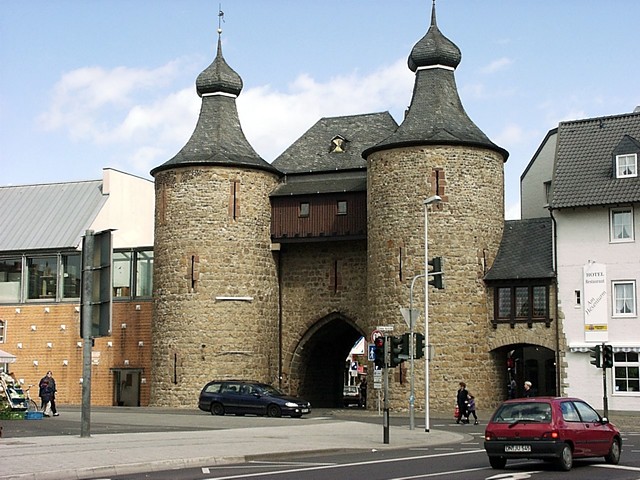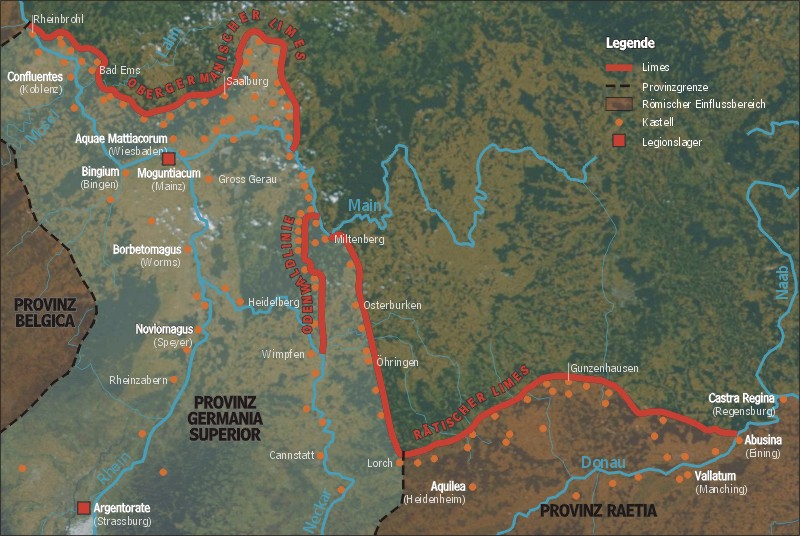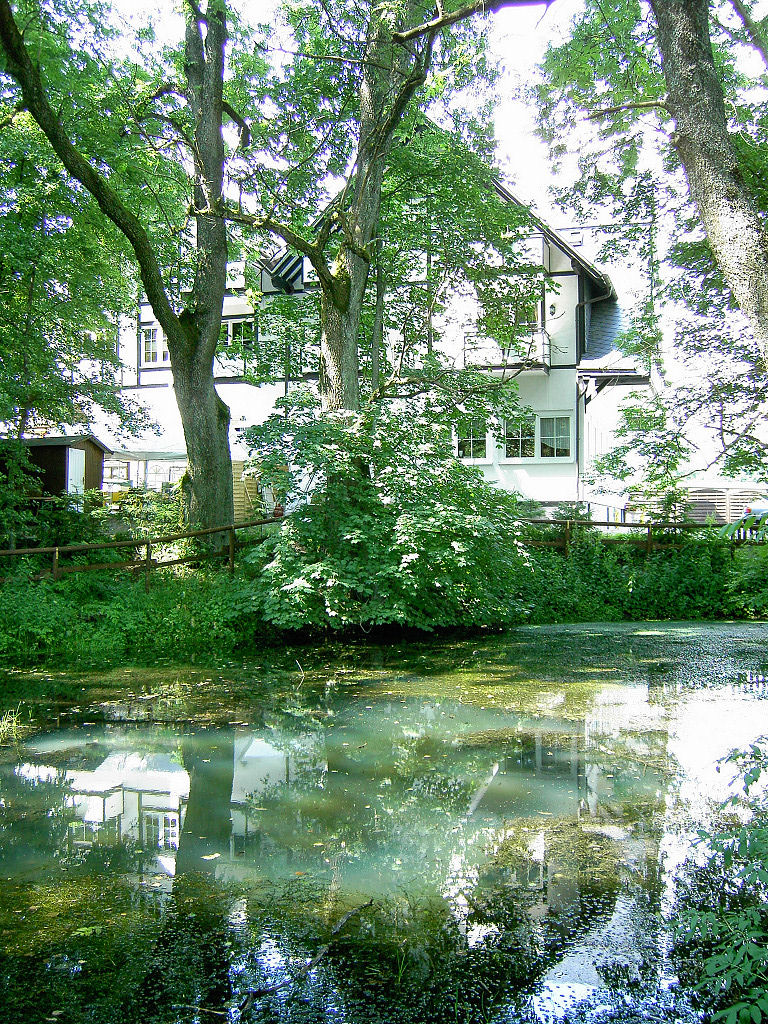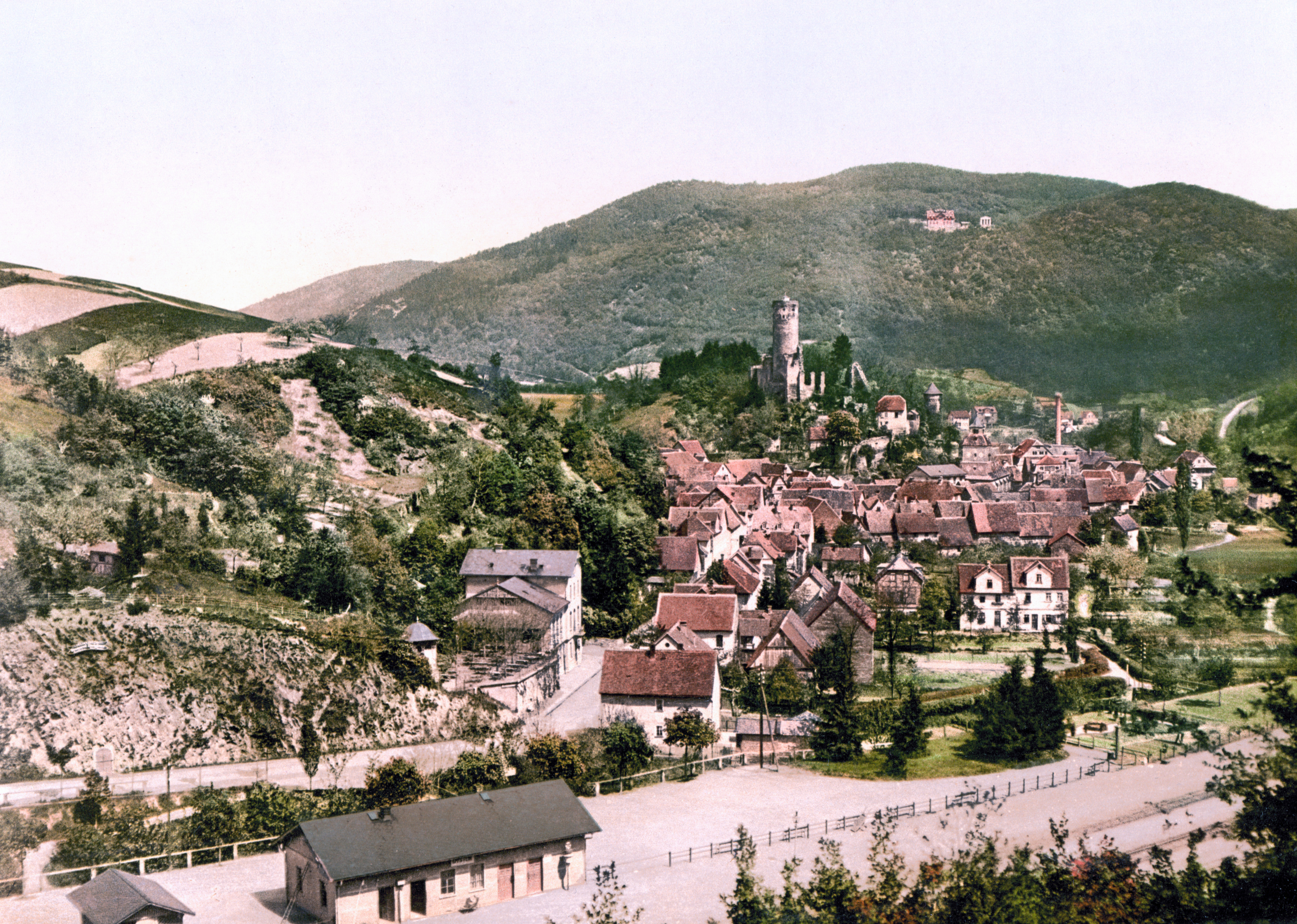|
Idstein
Idstein () is a town of about 25,000 inhabitants in the Rheingau-Taunus-Kreis in the ''Regierungsbezirk'' of Darmstadt in Hesse, Germany. Because of its well preserved historical Altstadt (Old Town) it is part of the ''Deutsche Fachwerkstraße'' (German Timber-Frame Road), connecting towns with fine fachwerk buildings and houses. In 2002, the town hosted the 42nd Hessentag state festival. Geography Location Idstein lies in the Taunus mountain range, about north of Wiesbaden. The town's landmark is the ''Hexenturm'' (Witches' Tower), a 12th-century bergfried and part of Idstein Castle. The Old Town is found between the two brooks running through town, the Wolfsbach in the east and the Wörsbach in the west, on a high ridge reaching up to above sea level. This comes to an end in the Old Town's north end with the castle and palace crags, behind which the two brooks run together. On the Wolfsbach, remnants of the like-named, now forsaken village can still be made out. The estate a ... [...More Info...] [...Related Items...] OR: [Wikipedia] [Google] [Baidu] |
Idstein Castle
Idstein Castle (german: Burg Idstein), later the Renaissance style ''Schloss Idstein'', is located in Idstein in the county of Rheingau-Taunus, Germany. The hill castle was the ''residenz'' of the counts of Nassau-Idstein. The castle's Witches' Tower (''Hexenturm'') is one of the town's oldest buildings and a substantial local landmark. History The original castle of Idstein was built around 1170 on a rocky ridge in the centre of the Old Town. Within the inner bailey, only the bergfried, the old district courthouse, the 15th century gatehouse and the palas have survived from the castle. In the early 17th century, during the time of Prince George Augustus Samuel of Nassau-Idstein, a Renaissance style schloss was built on the site of the outer ward. Its Baroque interior was completed around 1714. The architect was Maximilian von Welsch, the stucco work, especially in the so-called Emperor Chamber (''Kaisergemach''), was carried out by Carlo Maria Pozzi. The ceiling paintings ... [...More Info...] [...Related Items...] OR: [Wikipedia] [Google] [Baidu] |
Niedernhausen
Niedernhausen im Taunus is a municipality in the Rheingau-Taunus-Kreis in the ''Regierungsbezirk'' of Darmstadt in Hesse, Germany, with almost 15,000 inhabitants. Geography Location Niedernhausen lies in the Rhein-Taunus Nature Park in the west of the Frankfurt Rhine Main Region north of Wiesbaden. The main centre of Niedernhausen (which alone is home to more than half the community's inhabitants) and the outlying centre of Königshofen stretch along the slopes of a dale. The heart of the community is found in the bottom of the dale. The community is surrounded by mixed forest covering 60% of the municipal area. Niedernhausen lies on the south flank of the Taunus low mountain range, a fold range that stretches from the Niederwald ("Lower Forest") near Rüdesheim am Rhein towards the northeast, on into the Wetterau near Bad Nauheim. This range is subdivided by two gaps, namely the Idstein Basin and the Saalburg Basin, into three parts: the Rheingau-Taunus, the High Taunus ... [...More Info...] [...Related Items...] OR: [Wikipedia] [Google] [Baidu] |
Witches' Tower
Witch tower or Witches' Tower (german: Hexenturm) is a common name or description in English and other European languages for a tower that was part of a medieval town wall or castle, often used as a prison or dungeon. History The name is derived from the period of witch trials. Many of these towers were used to incarcerate those suspected or found guilty of witchcraft. Other witch towers were, however, named later, for example in the 19th century when they were simply used as normal prisons or were just ordinary towers in the city walls. Witch towers are found in many German towns and cities such as Aschersleben, Coburg, Frankenberg (Eder), Fulda, Gelnhausen, Geseke, Heidelberg, Herborn, Hofheim am Taunus, Idstein, Jülich, Kaufbeuren, Lahnstein, Landsberg am Lech, Marburg, Markdorf, Memmingen, Olpe, Rheinbach, Rüthen, Treysa, Windecken. Today these towers are sometimes renovated and used to house museums. According to legend, witches were burnt at the stake at the Witch ... [...More Info...] [...Related Items...] OR: [Wikipedia] [Google] [Baidu] |
Waldems
Waldems () is a municipality in the Rheingau-Taunus-Kreis in the '' Regierungsbezirk'' of Darmstadt in Hesse, Germany. The municipality's administrative seat is Waldems-Esch. Geography Location Waldems is located in the Taunus in a widely wooded setting at the northwest foot of the Feldberg massif at 250 to 629.3 m above sea level, the southern hilltop of the mountain ''Windhain'', which is the highest point of the district Rheingau-Taunus-Kreis, rising east of the constituent municipality of Wüstems. Neighbouring communities Waldems is the easternmost municipality in the Rheingau-Taunus-Kreis and borders in the northeast on the municipality of Weilrod, in the east on the municipality of Schmitten, in the southeast on the municipality of Glashütten (all three in the Hochtaunuskreis), in the south and west on the town of Idstein (Rheingau-Taunus-Kreis) and in the northwest on the town of Bad Camberg ( Limburg-Weilburg). Constituent communities The municipality ... [...More Info...] [...Related Items...] OR: [Wikipedia] [Google] [Baidu] |
Hünstetten
Hünstetten is a municipality in the Rheingau-Taunus-Kreis in the ''Regierungsbezirk'' of Darmstadt in Hesse, Germany. Neighbouring communities Hünstetten borders in the north on the community of Hünfelden, in the northeast on the town of Bad Camberg (both in Limburg-Weilburg), in the east on the town of Idstein, in the south on the town of Taunusstein and in the west on the communities of Hohenstein and Aarbergen (all in the Rheingau-Taunus-Kreis). Constituent communities Hünstetten is made up of the following ''Ortsteile'': Total: 10,218 The population figures are based on data for 31 December 2007. History In the course of municipal reform in Hesse, the community of Hünstetten came into being on 1 January 1972 through the merger of the communities of Beuerbach, Kesselbach, Ketternschwalbach, Limbach, Strinz-Trinitatis and Wallbach. On 1 July 1972, they were joined by Oberlibbach, and then Bechtheim, Görsroth and Wallrabenstein on 1 January 1977, giving Hünstetten ... [...More Info...] [...Related Items...] OR: [Wikipedia] [Google] [Baidu] |
Taunusstein
Taunusstein () is the biggest town in the Rheingau-Taunus-Kreis in the ''Regierungsbezirk'' of Darmstadt in Hessen, Germany. It has 30,068 inhabitants (2020). Geography Location Taunusstein lies roughly 10 km northwest of Wiesbaden and about 10 km west of Idstein and the Autobahn A 3. It is part of the Untertaunus (lower Taunus) range. Taunusstein itself is a rural area and is about 30 km from the river Rhine. The lowest point in Taunusstein is 310 m above sea level, and the highest 613.9 m. Neighbouring communities Taunusstein borders in the north on the communities of Hohenstein and Hünstetten and the town of Idstein, in the east on the community of Niedernhausen, in the south on the district-free city of Wiesbaden and in the west on the community of Schlangenbad and the town of Bad Schwalbach. Constituent communities Taunusstein is made up of ten '' Stadtteile'': History The town of Taunusstein came into being on 1 October 1971 through the ... [...More Info...] [...Related Items...] OR: [Wikipedia] [Google] [Baidu] |
Bergfried
''Bergfried'' (plural: ''bergfriede''; English: ''belfry''; French: ''tour-beffroi''; Spanish: ''torre del homenaje'') is a tall tower that is typically found in castles of the Middle Ages in German-speaking countries and in countries under German influence. Friar describes it as a "free-standing, fighting-tower".Friar (2003), p 36. Its defensive function is to some extent similar to that of a keep (also known as a ''donjon'') in English or French castles. However, the characteristic difference between a bergfried and a keep is that a bergfried was typically not designed for permanent habitation. Overview The living quarters of a castle with a bergfried are separate, often in a lower tower or an adjacent building called a ''palas'' (an English-style keep combines both functions of habitation and defence.) Consequently, a bergfried could be built as a tall slender tower with little internal room, few vaults and few if any windows. The bergfried served as a watchtower and as a re ... [...More Info...] [...Related Items...] OR: [Wikipedia] [Google] [Baidu] |
Rheingau-Taunus-Kreis
Rheingau-Taunus is a Kreis (district) in the west of Hesse, Germany. Rheingau-Taunus-Kreis is part of the Darmstadt region; its main administrative seat is Bad Schwalbach. Outposted sections of the local administration are located in Idstein and Rüdesheim am Rhein. Neighbouring districts are the Hessian districts of Limburg-Weilburg, Hochtaunuskreis, Main-Taunus-Kreis, district-free Wiesbaden and Mainz-Bingen and Rhein-Lahn which are located in Rhineland-Palatinate. History From 983 to 1803, the Rheingau area belonged to the Electorate of Mainz and was then merged into the new Duchy of Nassau. The Untertaunus region was part of the Earldom of Katzenelnbogen. From 1816 onward, the whole area of the district became part of the Duchy of Nassau. After the 1866 Austro-Prussian war, Nassau was annexed by Prussia and formed the new province of Hesse-Nassau. In 1867, the province was divided into districts. Therefore, the districts of Rheingau and Untertaunus were created. After the ... [...More Info...] [...Related Items...] OR: [Wikipedia] [Google] [Baidu] |
Glashütten (Taunus)
Glashütten is a small municipality in the Hochtaunuskreis. This community in the Taunus, which is made up of the three formerly independent communities of Glashütten, Schloßborn and Oberems, lies in the Hochtaunus Nature Park, not far from Königstein im Taunus, Germany. Geography Neighbouring communities Glashütten borders in the north on the communities of Waldems ( Rheingau-Taunus-Kreis) and Schmitten, in the east on the town of Königstein, in the south on the towns of Kelkheim and Eppstein, and in the west on the town of Idstein Idstein () is a town of about 25,000 inhabitants in the Rheingau-Taunus-Kreis in the ''Regierungsbezirk'' of Darmstadt in Hesse, Germany. Because of its well preserved historical Altstadt (Old Town) it is part of the ''Deutsche Fachwerkstraße'' ... (Rheingau-Taunus-Kreis). Constituent communities Glashütten consists of the three centres of Glashütten, Oberems and Schloßborn. Schloßborn This is arguably the first verifiable set ... [...More Info...] [...Related Items...] OR: [Wikipedia] [Google] [Baidu] |
Fachwerk (Germany)
Timber framing (german: Holzfachwerk) and "post-and-beam" construction are traditional methods of building with heavy timbers, creating structures using squared-off and carefully fitted and joined timbers with joints secured by large wooden pegs. If the structural frame of load-bearing timber is left exposed on the exterior of the building it may be referred to as half-timbered, and in many cases the infill between timbers will be used for decorative effect. The country most known for this kind of architecture is Germany, where timber-framed houses are spread all over the country. The method comes from working directly from logs and trees rather than pre-cut dimensional lumber. Hewing this with broadaxes, adzes, and draw knives and using hand-powered braces and augers (brace and bit) and other woodworking tools, artisans or framers could gradually assemble a building. Since this building method has been used for thousands of years in many parts of the world, many styles ... [...More Info...] [...Related Items...] OR: [Wikipedia] [Google] [Baidu] |
Lahn
The Lahn is a , right (or eastern) tributary of the Rhine in Germany. Its course passes through the federal states of North Rhine-Westphalia (23.0 km), Hesse (165.6 km), and Rhineland-Palatinate (57.0 km). It has its source in the Rothaargebirge, the highest part of the Sauerland. It meets the Rhine at Lahnstein, near Koblenz. Important cities along the Lahn include Marburg, Gießen, Wetzlar, Limburg an der Lahn, Weilburg and Bad Ems. Tributaries to the Lahn include the Ohm, Dill, the Weil and the Aar. The lower Lahn has many dams with locks, allowing regular shipping from its mouth up to Runkel. Riverboats also operate on a small section north of the dam in Gießen. Source area The Lahn is a -long, right (or eastern) tributary of the Rhine in Germany. Its course passes through the federal states of North Rhine-Westphalia (23.0 km), Hesse (165.6 km), and Rhineland-Palatinate (57.0 km). The Lahn originates at the Lahnhof, a locality of ... [...More Info...] [...Related Items...] OR: [Wikipedia] [Google] [Baidu] |
Eppstein
Eppstein is a town in the Main-Taunus-Kreis, in Hesse, Germany. Eppstein lies west of Frankfurt am Main, around 12 km north east of the state capital Wiesbaden, and is at the edge of the Taunus mountains. The ruins of the Eppstein castle is a prominent landmark, and houses a museum. Geography Neighbouring municipalities and areas To the north, Eppstein borders the city of Idstein ( Rheingau-Taunus-Kreis) and the municipality of Glashütten ( Hochtaunuskreis). To the east is the city of Kelkheim, to the south the city of Hofheim, and to the west the city of Wiesbaden and the municipality of Niedernhausen. City arrangement Eppstein consists of five areas: Bremthal, Ehlhalten, Eppstein, Niederjosbach and Vockenhausen. Bremthal Bremthal has a rapid-transit railway stop on line S2. With approximately 5000 inhabitants, Bremthal is the most populous quarter of Eppstein, and is the economic and cultural centre. Bremthal has several associations e.g. a brass band, Germania s ... [...More Info...] [...Related Items...] OR: [Wikipedia] [Google] [Baidu] |







